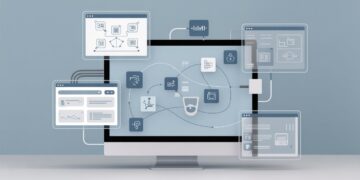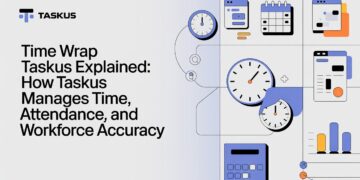Predictive customer analytics is like a superpower for businesses. It helps them better understand what their customers like, need, and do. They use data and smart computer programs to make predictions, which they couldn’t do before. Having a crystal ball to improve their marketing and make customers happier is like.
Using predictive customer analytics is like having a secret weapon for businesses. It assists in using data for wise decisions, creating personalized customer experiences, and improving business growth.
Success.ai uses AI to help companies find new customers and predict customer behaviour. It’s like having a crystal ball that’s exceptionally good at guessing what people will do. By leveraging the capabilities of their advanced tools, you can transform your lead generation strategies and achieve consistent growth.
In this article, we’ll discuss how their software helps B2B businesses with predictive customer analytics. We’ll focus on the special things their software can do to meet their needs.
What is Predictive Customer Analytics?
Predictive customer analytics is like having a crystal ball for businesses. It looks at how customers have acted in the past and uses that info to guess what they might do in the future. This helps businesses make smart choices and sell more. They can determine customer preferences, and their shopping habits, and even predict if they are likely to churn.
This helps companies to be one step ahead in today’s personalized market. They can adapt marketing to suit customer preferences, personalize each customer’s experience, and use resources efficiently. Customer analytics makes them grow, keeps customers happy, and lets them stay competitive.
Importance of Predictive Customer Analytics for Businesses
Predictive customer analytics is super important for businesses today. It helps them understand how customers act and make smarter choices. Here are some significant reasons why it’s so vital:
Anticipating Customer Needs: Predictive analytics helps businesses know what customers like and might want in the future. It looks at past info to find patterns and trends. This helps companies suggest things that customers might want to buy, making them happier.
Optimizing Marketing Strategies: With predictive customer analytics, businesses can improve their marketing. They have the ability to display the appropriate advertisements to the correct audience at the most opportune moment.
This makes their ads work exceptionally well. They can also group customers based on what they like and send them special offers. This increases the interest and purchasing behaviour of individuals.
Reducing Churn: Predictive analytics can help businesses identify early warning signs of customer churn. Companies can use customer data to predict and prevent customer churn by offering personalized deals and proactive support. This reduces customer attrition and enhances long-term customer loyalty.
Improving Operational Efficiency: Predictive customer analytics can make businesses work better and save money. It helps them figure out what customers might need and when there could be problems with their services. They can plan how much inventory to keep and ways to speed up delivery to customers. It economizes resources, streamlines operations, and ensures customer satisfaction.
The benefits of Predictive Customer Analytics
Predictive customer analytics helps businesses in many ways to do better and grow. Here are some good things about using it:
Enhanced Customer Understanding: Predictive customer analytics helps businesses know a lot about what customers like and want. This way, they can make their products, ads, and how they treat customers fit perfectly with what people want.
Personalized Marketing Campaigns: Predictive customer analytics helps businesses make ads and messages just for you. They examine your past actions, purchases, and location. They can dispatch items you prefer at the appropriate time, increasing the probability of you purchasing them.
Improved Customer Retention: With predictive customer analytics, businesses can tell when a customer might leave. They can then do things to keep that customer happy, like giving special treatment or offers. This way, they can stop customers from leaving and make them stick around for a long time.
Optimal Resource Allocation: Predictive customer analytics is like a crystal ball for businesses. This assists them in determining the quantity of materials they need to possess, produce, or employ. In this manner, they avoid unnecessary waste and can operate effectively.
Competitive Advantage: Using predictive customer analytics makes businesses better than their competition. They can do this by staying up-to-date and changing things based on what customers want. It helps them find new chances and adapt quickly to what customers expect.
Data-Driven Decision Making: Predictive customer analytics helps businesses make smart decisions using facts and data. It gives them useful information so they can make good plans, use their resources well, and avoid problems.
Key Components of Predictive Customer Analytics
Predictive Customer Analytics has important parts that need to work together for it to be useful. These parts help us use data to guess things accurately and make smart choices. Let’s discuss these important parts.
Data Collection
The first thing in Predictive Customer Analytics is gathering information. To make good predictions, businesses need to collect lots of customer data. This data includes:
- Stuff about customers, like their age, gender, and where they live.
- Details regarding previous purchases and payment methods of customers.
- Customer behaviour online, such as their clicks and navigation.
- Customer feedback and ratings about a company.
- Customer activities on social media, such as their likes and shares.
Companies can obtain this information through online forms, surveys, website tracking, and database record-keeping. Having good quality and lots of data is important for making accurate predictions.
Data Preprocessing
After we gather data, we often need to get it ready for analysis. This means doing a few things:
- Cleaning the Data: We remove any copies, fix missing info, and correct mistakes.
- Changing the Data: We put the data in a standard way so it’s easy to work with. This might involve adjusting the numbers.
- Creating New Data: Sometimes we make new information that helps us make better guesses.
- Finding Odd Data: We search for unusual elements that might interfere with our predictions and address them.
Getting the data ready is important to make sure our guesses are right and dependable.
Machine Learning Models
Machine learning forms the core of Predictive Customer Analytics. They employ various machine learning algorithms to analyze customer data and make predictions. These algorithms can include:
- Decision Trees: A tree-like model used for classification and regression tasks.
- Regression Models: Linear and nonlinear regression models to predict numerical values.
- Clustering Algorithms: Identifying customer segments with similar behaviours.
- Neural Networks: Deep learning models for complex pattern recognition.
- Time Series Analysis: Modeling time-dependent customer behaviour, such as seasonality and trends.
Choosing the right machine learning model depends on the specific prediction task and the characteristics of the customer data.
Data Visualization
Data visualization is important for presenting understandable and actionable insights and patterns from customer data. Effective data visualization tools and techniques enable businesses to:
- Identify Trends: Visual representations can reveal trends, clusters, and anomalies in the data.
- Communicate Findings: Visualizations simplify the communication of results and insights to stakeholders.
- Track Customer Behavior: Charts, graphs, and dashboards provide real-time monitoring of customer interactions.
Data visualization tools vary based on data complexity and audience, from simple bar charts to complex interactive dashboards.
These key components collectively contribute to the success of Predictive Customer Analytics. They enable businesses to anticipate customer behaviour, personalize marketing strategies, optimize resources, and ultimately enhance customer satisfaction.
What is success.ai’s role in predictive customer analytics?
Success.ai plays a crucial role in analyzing customer data. It uses machine learning to help businesses in customer engagement through email marketing automation. With its distinctive features, their supreme software empowers B2B businesses to generate more leads and achieve consistent business growth.
Their software has two important features. One is the Lead Finder, which helps you find contact information for important people. The second feature is the AI email writer, which helps businesses write personalized emails for their target audience.
They have a tool called email warm-up that predicts customer behaviour and stops your emails from going to spam. This helps businesses build a good reputation and get their emails in the right place.
With the help of AI-powered algorithms, Success.ai lets large corporations create incredibly captivating content that entices more individuals to purchase their products. Being personal is a significant aspect of customer analytics. It helps businesses understand what different customers like and need, so they can change how they market things.
Driving Growth and Competitive Advantage with Predictive Analytics
In the busy world of business today, it’s important to grow and be better than others to succeed in the long run. Predictive analytics is a powerful tool that helps businesses thrive by discovering new opportunities and staying ahead of competitors.
Using smart data analysis, predictive analytics helps companies make accurate predictions, understand current events, and identify customer preferences. This helps businesses make their marketing better, make customers happy, work more efficiently, and use their resources wisely.
Through the use of predictive analytics, companies can make decisions based on data, capitalize on market opportunities, improve customer success, and secure a strong competitive standing in their specific sectors.
From Data to Decision-Making: Predictive Customer Analytics
In today’s digital age, it’s important for businesses to use data from different sources. But the real magic happens when they turn that data into useful insights that help them make smart choices. That’s where predictive customer analytics comes in.
Predictive customer analytics uses smart computer programs to help businesses understand their data better. It helps them find patterns and trends and guess what customers might do next.
These insights help businesses make good decisions, from how to advertise to how to use their resources. This leads to more success. Companies can use data to grow, make customers happier, and outperform their competition with predictive customer analytics.
Conclusion
For businesses to thrive in a fast and competitive market, they need to use predictive customer analytics. This means using smart computer programs to understand how customers behave, what they like, and what they need.
Success.ai is a set of powerful tools that use AI to help businesses with this. One of these tools is the lead finder, which helps businesses find important people to connect with.
Their software helps businesses find customers, grow, and stay ahead in their industry.
To succeed in the competitive market, use their predictive customer analytics and tools now. This will help you find new chances, be better than others, and succeed in the long run.
Also Read Interesting Articles At: Tech New Master.


















